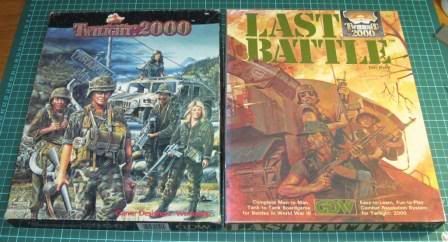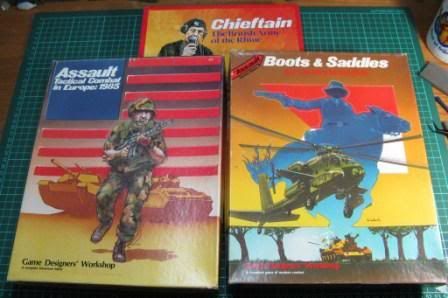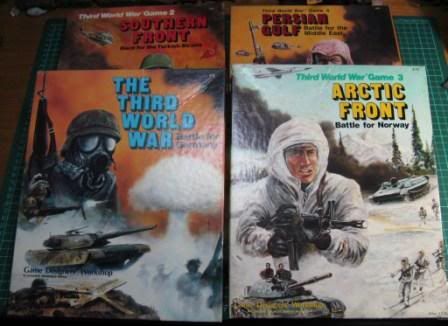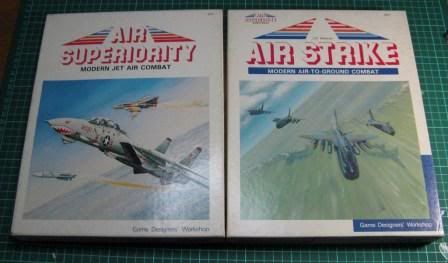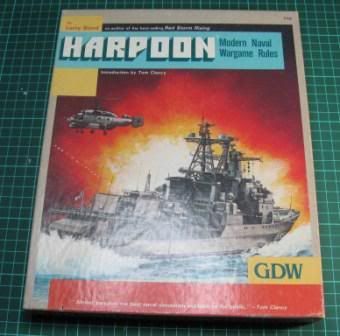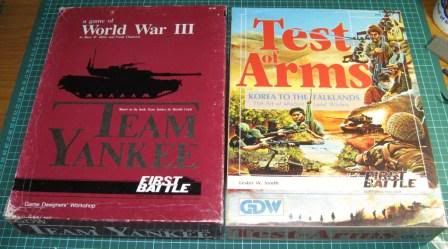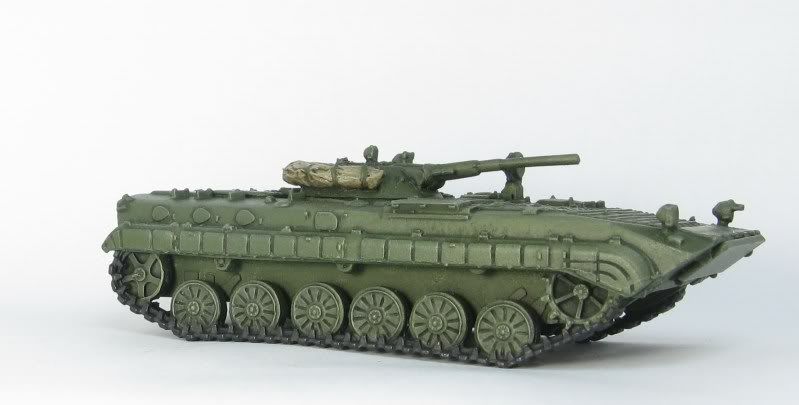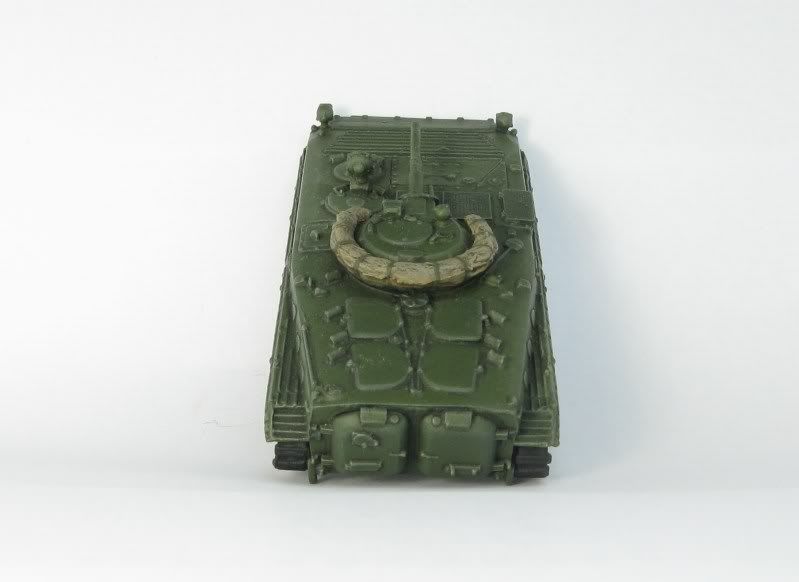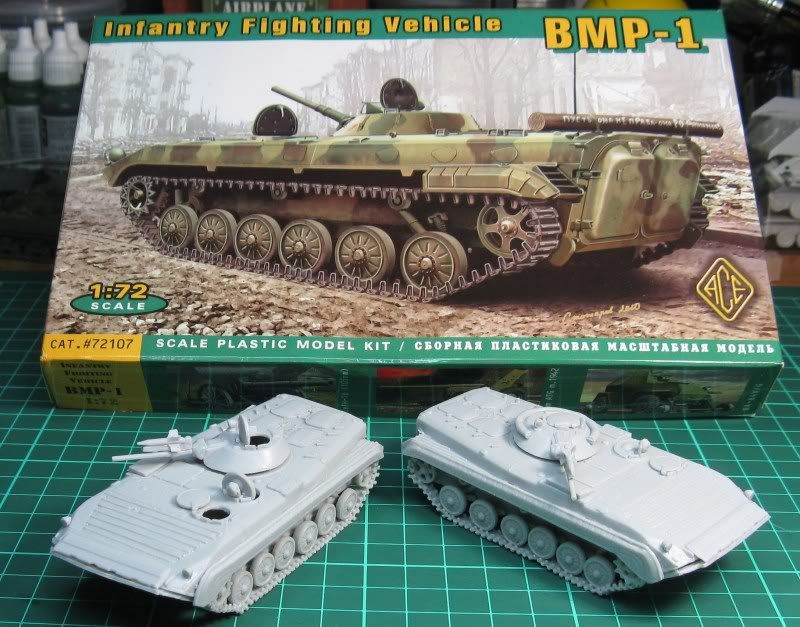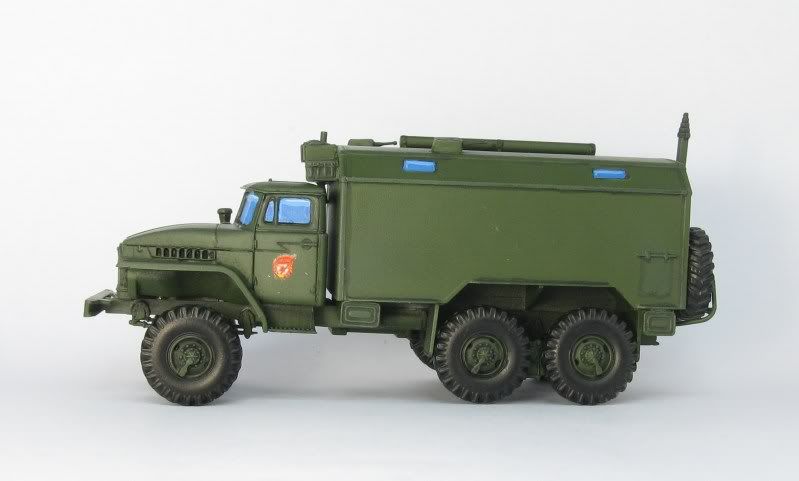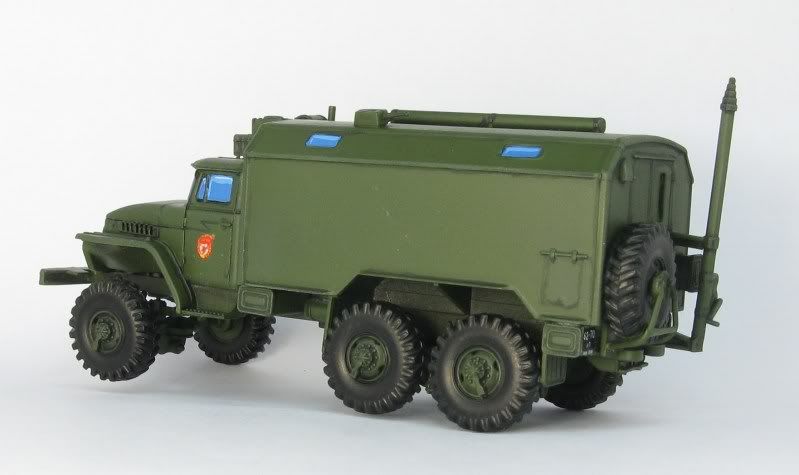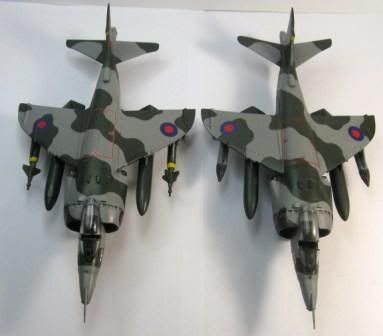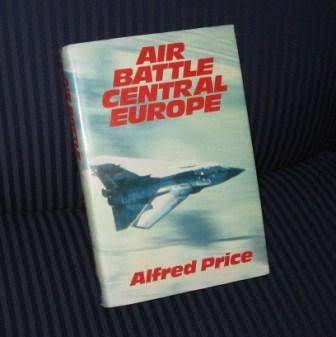
From the inside jacket: “If it ever came to an all-out fight between NATO and Warsaw Pact forces, the flatlands of northern Germany could be the scene of some of the fiercest ground fighting. This book vividly describes the sort of air actions that would take place above, in front of and behind that land battle.”
The book is based around a series of interviews with a number of high ranking and middle ranking NATO officers and is primarily focused on NORTHAG and the Second Allied Tactical Air Force (2 ATAF). It begins with an imagined 2 ATAF Communiqué reporting on the air support provided to NORTHAG on the first day of a war in Central Europe.
From there, the author interviews the Commander of 2 ATAF who provides a very interesting “View from the Top” – an overview of his assets, what he might receive in wartime conditions, his responsibilities in a war, how they would attempt to blunt the initial strike by WARPAC etc. He discusses AWACS, SAMs, the need to take the offensive and results of putting enemy airfields out of action, the role of recon fighters, Close Air Support (CAS) and helicopters (including some interesting thoughts on the Hind). Its actually pretty useful stuff, and is easy to understand.
The next interview is with a British Army Colonel who in the early 1980’s was responsible for coordinating air and land operations in NORTHAG. He describes how army commanders make decisions and requests for air support. Interestingly he points out that the CO of NORTHAG used to say that the job of the air force was to keep the enemy air force off his back and stop the enemy’s second echelon of reserves from linking up with their front echelon. This meant that the army had to accept that at least for the first few days of a conflict the only friendly aircraft they would see would be passing through their area at high speed on their way to and from targets beyond the battle area.
The majority of the chapters in the book is focused on different aircraft and their role in a conflict as described through interview by typically a senior officer from that aircraft’s squadron. They are:
The Air Defence Battle – USAF F-15C
The Long Punch – USAF F-111E
The Bridge Droppers – USAF F-111F
The Airfield Bashers – RAF Tornado GR1
The Carpet-Bombers – Luftwaffe Tornado
The Jump-Jet Dimension – RAF Harrier GR3
The Battlefield Bruisers – USAF A-10
The Intelligence Gatherers – USAF Phantom RF-4C
The Tank-Swatters – British Army Lynx and Gazelle
The Electronic Foxers – USAF EF-111Raven
The ‘Wild Weasels – USAF Phantom F-4G and Phantom F-4E
Guardians of the Baltic Shore – Marine Flieger Tornado and F-104
There is also a chapter on the Air Defence of the UK and the book finishes with a wrap up Overview, putting the whole picture together.
The whole book is excellent and I learnt a lot, but the chapters of most worth to a “standard wargame” i.e. focused on the ground operations, are the chapters on the CAS and helo operations – looking at the Harrier, A-10 and Lynx. So I’ll try and draw out what I found most interesting from each chapter.
Harrier GR3
I’m a bit of a fan of the old Harrier – so much of the chapter was not particularly new to me. The bit that I found most interesting was that although the Harriers normally operate in pairs, the RAF are not keen to send them out in penny-packets. Even though the Harriers are dispersed, they would prefer to attack an appropriate target sorties of 12 aircraft plus. That’s a lot of cluster bombs.
Harriers would not normally operate in what a wargamer would consider CAS – instead operating on the far side of the battle line.
BL755 Cluster bombs
A-10 Warthog
A-10’s on the other hand do operate in pairs normally, with two pairs coming together on the odd occasion to hammer an enemy armoured force. An A-10 gun run will normally only target one vehicle, unless two happen to be very close together, but a single A-10 should be able to knock out 10 tanks in a single mission.
A-10’s use Forward Air Controllers to identify AA systems like the ZSU-23-4 and try to engage them with their Mavericks, meaning then can stand off, out of range of the Shilka, and still destroy it.
A-10 pilots view the Hind as their most serious airborne threat.
Lynx AH.1
I found this chapter very interesting and it really bought into focus how the British Army intended to use their anti-tank helicopters. It describes how the Gazelle and Lynx’s work together, how they plan and set up operations, and how the helos move into firing positions. “When flying nap-of-the-earth one feels more like an infantryman than an aviator. It is more akin to being an airborne Land Rover than a low-level fast jet.”
I was interested to read that all the firing positions would have been previously scouted, how artillery would be used to force tank crews to button up, and how a squadron sized attack would take place – trying to get side shots where possible on individually selected vehicles.
“If everything had gone according to plan, the first the enemy knew of the attack would be when up to 24 tanks and other key vehicles in his force suddenly burst into flames; and then between 10 and 20 seconds later, depending on the helicopters’ firing range, a whole lot more would go up; and with another 20 seconds, more still. That would certainly make a tank battalion commander’s eyes water – if that is not shock action, I don’t know what is! Without doubt it would throw an enemy column into complete and utter chaos and bring their advance to a halt until they could sort themselves out.”
The chapter completely changed my ideas of how I would try to write rules for how attack helos would operate in a Cold War Hot scenario.
Now – something highly unlikely to ever be needed in a wargame – but really cool – the book discussed some of the weapons systems used to attack large concentrations of armour and airfields. So I thought I’d show you some youtube clips of some of the systems discussed in the book.
West German MW-1
RAF JP233
Durandel BLU-107
Recommendation
I would certainly recommend this book to anyone who wants to better understand air power and how it relates to the ground battle. I got mine cheaply too - so that helps!
Have fun
Richard
